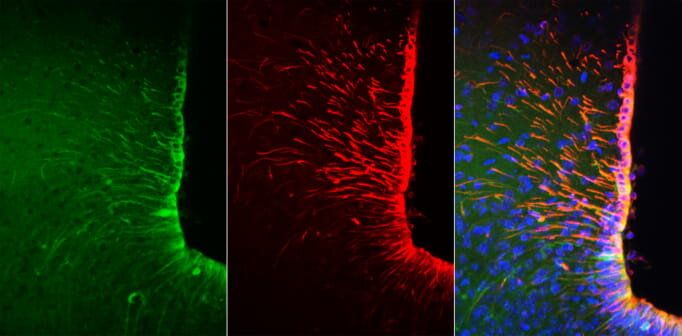Page 7352
Jun 9, 2020
The Last Days of the Blue-Blood Harvest
Posted by Brent Ellman in category: biotech/medical
Every year, more than 400,000 crabs are bled for the miraculous medical substance that flows through their bodies—now pharmaceutical companies are finally committing to an alternative that doesn’t harm animals.
Jun 9, 2020
Laser beams for superconductivity: Research sheds light on unexpected physical phenomena
Posted by Quinn Sena in categories: chemistry, energy
A laser pulse, a special material, an extraordinary property which appears inexplicably. These are the main elements that emerge from a research conducted by an international team, coordinated by Michele Fabrizio and comprising Andrea Nava and Erio Tosatti from SISSA, Claudio Giannetti from the Università Cattolica di Brescia and Antoine Georges from the Collège de France. The results of their study have recently been published in the journal Nature Physics. The key element of the study is a compound of the most symmetrical molecule that exists in Nature, namely C60 bucky-ball, a spherical fullerene.
It is well known that this compound, with the chemical formula K3C60, can behave as a superconductor — that is, conduct without dissipating energy — below a critical temperature of 20 degrees Kelvin, i.e. around −253 degrees Celsius.
It has recently been discovered that K3C60 is capable of transforming into a high-temperature superconductor when struck by an extremely brief laser pulse. This material takes on superconductive properties — albeit extremely briefly — up to a temperature of −73 degrees Centigrade, almost 100 degrees above the critical equilibrium temperature. The research just published by the scientists explains the reason for this mysterious behaviour.
Jun 9, 2020
What Should We Worry About When It Comes to Genetically Modified Mosquitoes?
Posted by Genevieve Klien in categories: bioengineering, genetics
Jun 9, 2020
This NASA Astronaut Just Became the First Woman to Dive to the Ocean’s Deepest Point
Posted by Genevieve Klien in category: space
After her dive yesterday, Dr. Kathy Sullivan spoke to astronauts on the International Space Station to compare notes about “recyclable” vessels for undersea and space exploration.
Jun 9, 2020
Alien Carnivorous Frog Invasion Wreaks Havoc on Natural Habitat
Posted by Genevieve Klien in categories: education, government, habitats
“The state government should consider managing the invasive population of spotted-thighed frogs at Streaky Bay. This should include education programs to inform people about what to do if they find a frog, as well as the feasibility of exterminating the population in South Australia.
“Importantly, if you do see one of these critters in your travels – leave it be. We don’t want it hitchhiking any further.”
Reference: ” Indiscriminate feeding by an alien population of the spotted-thighed frog (Litoria cyclorhyncha) in southern Australia and potential impacts on native biodiversity” by Christine M. Taylor, Gunnar Keppel, Shaun O’Sullivan, Stefan Peters, Gregory D. Kerr and Craig R. Williams, 9 April 2020, Australian Journal of Zoology. DOI: 10.1071/ZO19042
Jun 9, 2020
Spontaneous Brain Oscillations and Perceptual Decision-Making
Posted by Genevieve Klien in category: neuroscience
Making rapid decisions on the basis of sensory information is essential to everyday behaviors. Why, then, are perceptual decisions so variable despite unchanging inputs?
Spontaneous neural oscillations have emerged as a key predictor of trial-to-trial
Perceptual variability. New work casting these effects in the framework of models.
Jun 9, 2020
Why do Crew Dragon astronauts need to climb up one level using the stairs before ingress?
Posted by Genevieve Klien in category: space travel
While watching the launch of SpaceX Crew Dragon, I noticed that, once the astronauts came out of the elevator in the fixed service structure, they had to ‘climb up’ one level using the stairs, before entering the white room through the crew access arm. I’m curious to know why doesn’t the elevator take them directly to the crew access arm level?
Earlier, I thought the reason might be due to the height difference between the side hatches on the Space Shuttle and Crew Dragon. But after seeing the following image it became evident that the difference is more than one level:
Jun 9, 2020
Appetite can be increased by cells in the brain
Posted by Genevieve Klien in categories: food, neuroscience
It has previously been discovered that tanycytes—cells found in part of the brain that controls energy levels —detect nutrients in food and tell the brain directly about the food we have eaten.
Tanycytes do this by responding to amino acids found in foods, via the same receptors that sense the flavor of amino acids (“umami” taste), which are found in the taste buds of the tongue.
In the paper ‘Hypothalamic tanycytes generate acute hyperphagia through activation of the arcuate neuronal network.’ published today, the 8th June, in the journal PNAS, researchers from the School of Life Sciences at the University of Warwick, explain how tanycytes can increase appetite.
Jun 9, 2020
Scientists engineer one protein to fight cancer and regenerate neurons
Posted by Genevieve Klien in categories: biotech/medical, neuroscience
Our lungs, bones, blood vessels and other major organs are made up of cells, and one way our bodies keep us healthy is by using protein messengers known as ligands that bind to receptors on the surfaces of cells to regulate our biological processes. When those messages get garbled, it can make us ill with a host of different diseases.
